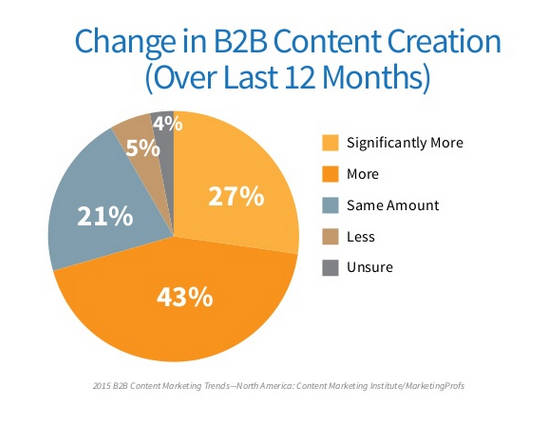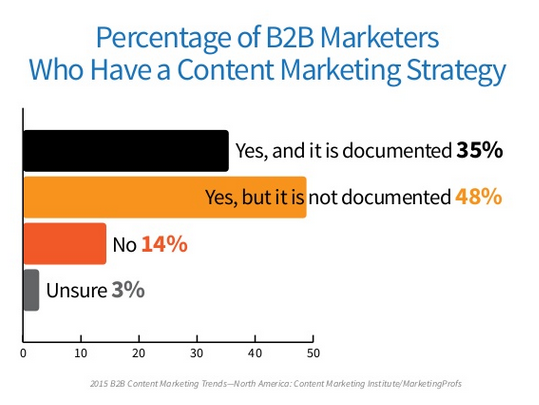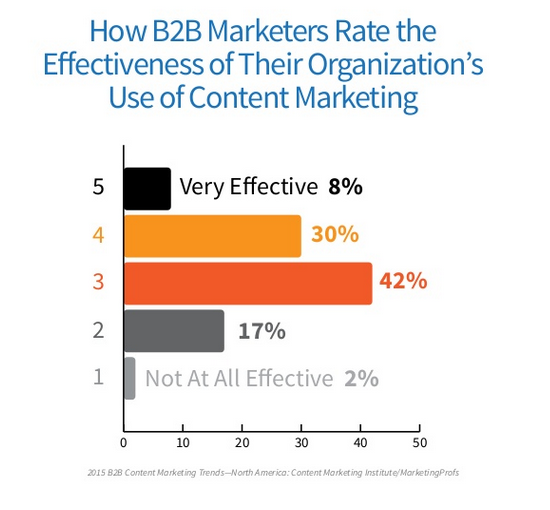Every year, the Content Marketing Institute and MarketingProfs release an annual benchmark survey of content marketing at B2B companies. The results rarely surprise. Sometimes they depress.
I received early access to review the results, and all of it is interesting. (You can access the full report here.) But there were three specific stats that will raise your eyebrows—if not the hair on the back of your neck.
Put simply, B2B marketers are producing more and more content. But most are failing to put a real strategy into action.
Here’s the proof: 70% of B2B marketers are producing more content than a year ago.

That’s expected. We need more content to reach our buyers across an ever growing number of touch points. But creating all that content—without connecting it to an internal, documented strategy—leads to a lot of waste.
This is surely happening at B2B companies because the latest survey shows only 35% have a documented strategy. Another 48% say they have strategy, but haven’t documented it.

Here’s the issue: If you have a strategy, and it’s not documented, then it’s hard to have accountability—one of the hallmarks of a true content marketing operation.
And you can see this already wreaking havoc at B2Bs. Last year, 42% of B2B marketers claimed to be effective at content marketing. This year, that number dropped to 38%.

I can’t say I’m surprised. When content is produced outside of a clearly documented and understood strategy, it’s essentially made in a vacuum. That leads to waste and what I call content landfills. In fact, SiriusDecisions has stated that as much as 70% of B2B content goes unused.
3 Charts That Prove B2B Marketers Have an Ugly Content Problem by @noyesjesse
This persistent issue will plague B2B marketers until they produce clear, documented strategies for the content they produce. (The survey finds that those who do have a documented strategy outperform those who don’t.)
This isn’t a back-of-the-napkin exercise. A content strategy should lead to a content operation: a centralized, focused process for producing, distributing, and analyzing content across silos, functions, and departments.
But it starts with getting serious and tackling some of the elephants we allow to hang around. When content is operationalized, it can serve multiple goals, grant visibility and accountability across functions and channels, expose the weaknesses and gaps in our content, and ensure we’re actually moving buyers through the pipeline.
In other words, it’s not about making more content. It’s about making the right content.

